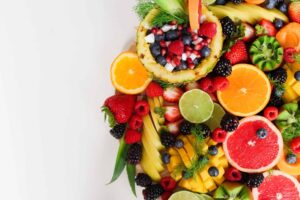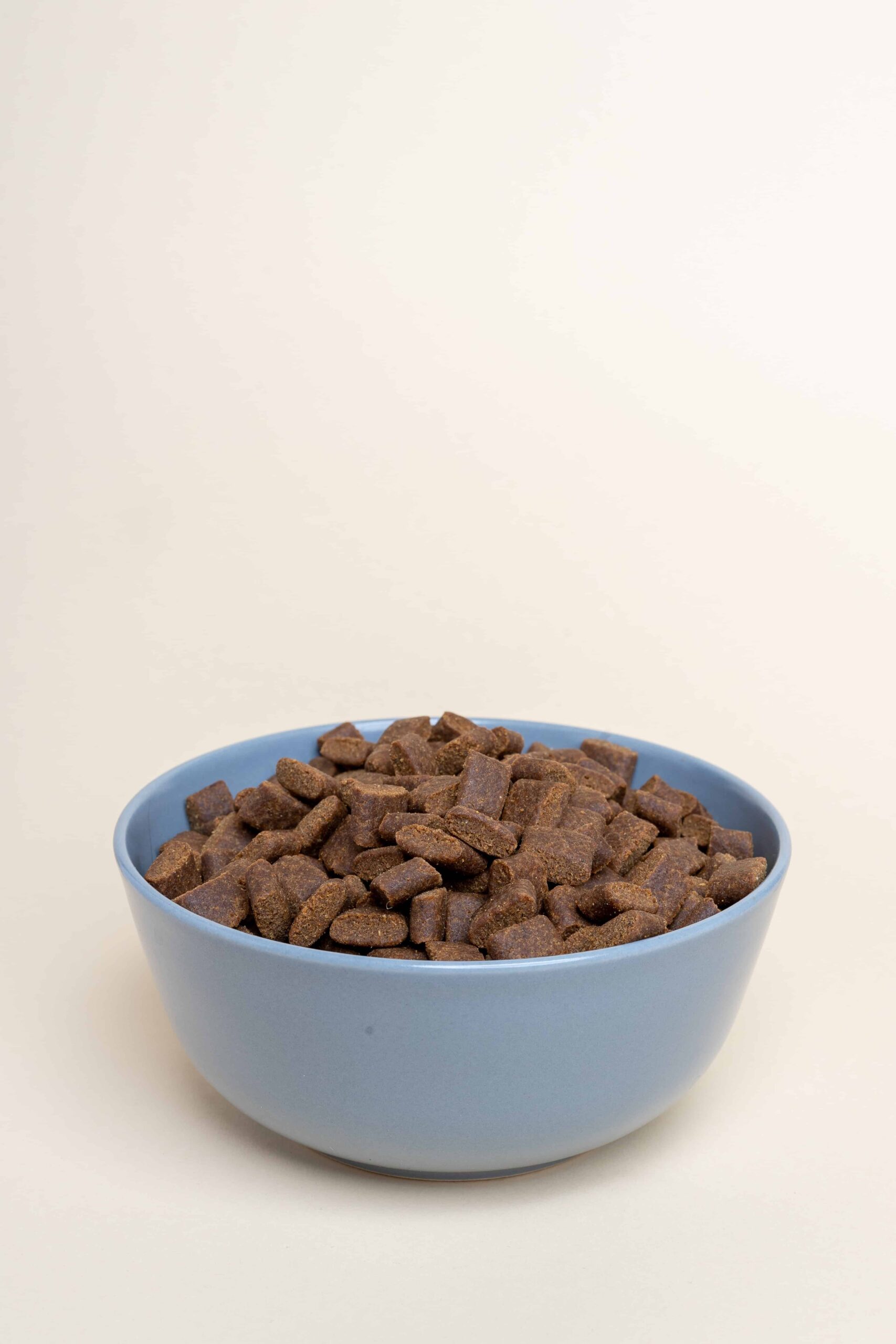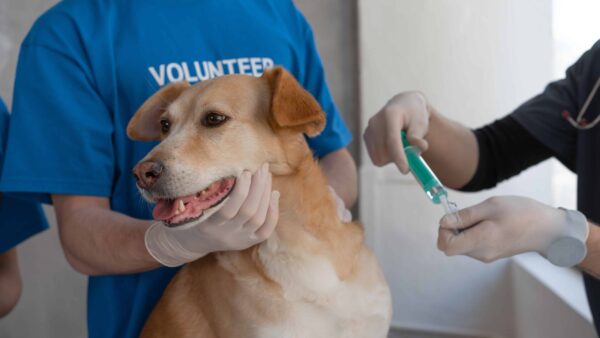As a responsible pet owner, the overall well-being of our canine companion is of utmost importance.
To get the best out of our dogs, we need to do a series of things such as grooming them regularly, involving them in exercises, taking them to vets, and last but not least feeding them with quality food.
When it comes to feeding, there are numerous choices available for dog food. You can choose to feed your dog with dry kibbles or fresh food.
While both options have their merits, it’s essential to understand the benefits and considerations associated with each.
In this article, we will explore the advantages and disadvantages of feeding fresh food and kibbles to dogs, helping you make an informed decision about what to feed your furry friend.
Without further ado, let’s dive in!
Understanding the Nutritional Needs of Dogs

The most popular question pet owners ask their vets is “What should I feed my dog?”. Dogs, like humans, require a balanced and nutritious diet to maintain optimal health. A well-rounded diet is essential for supporting their growth, development, and overall vitality.
Dogs are classified under the scientific class “Mammalia” This is a large group of animals with similar body structure.
The nutritional requirement of the animals in this class varies, some of them are obligate carnivores i.e. They have an absolute requirement for meat in their diet, some derive all their nutrients from eating only plants and they are called herbivores while some require both plants and animals to meet their nutritional need, they are known as omnivores, and this is where dogs and human are classified.
Dog’s tooth structure and their alimentary tract have revolutionized into supporting omnivorous diet. This means that under normal circumstances, your dog requires both plant-based feed and animal-based feed.
It is crucial to provide dogs with carbohydrates, vitamins, essential amino acids (from proteins), fatty acids (from fats), and minerals in the appropriate proportions.
What Are the Differences Between Fresh Foods and Kibbles

Fresh food refers to homemade meals or commercially available raw diets that consist of fresh ingredients.
On the other hand, kibbles are commercially produced dry dog food that often comes in pellet or biscuit form.
Let’s explore the pros and cons of each option to gain a better understanding.
Pros of Feeding Fresh Food to Dogs
- High nutritional value: Fresh food diets often contain whole foods that are minimally processed, preserving their nutritional value. This can result in higher nutrient bioavailability for dogs, allowing them to derive more benefits from their food.
- Better ingredient control: Preparing fresh food at home or choosing reputable brands allows pet owners to have better control over the ingredients used. This is especially beneficial for dogs with specific dietary restrictions or food sensitivities.
- Improved digestion: Fresh food diets are typically free from fillers, artificial additives, and preservatives, which can contribute to improved digestion and reduced gastrointestinal issues in dogs.
- Enhanced palatability: Fresh food diets are often more appealing to dogs due to their natural flavors and textures. This can be particularly beneficial for picky eaters or dogs with decreased appetite.
Cons of Feeding Fresh Food to Dogs
- Cost considerations: Fresh food diets can be more expensive compared to kibbles, especially if high-quality ingredients or commercially prepared raw diets are chosen. This can be a limiting factor for pet owners on a tight budget.
- Time and effort required: Preparing homemade fresh food or handling raw diets can be time-consuming and require additional effort compared to simply scooping kibbles from a bag. This may not be practical for individuals with busy schedules.
- The potential risk of bacterial contamination: Raw diets, if not handled and stored properly, can carry a risk of bacterial contamination, potentially posing health hazards to both dogs and their human companions. It’s important to follow proper food safety practices when handling and preparing fresh food diets.
Pros of Feeding Kibbles to Dogs

- Convenience and affordability: Kibbles are widely available and easy to store, making them a convenient option for pet owners. They are also generally more affordable compared to fresh food diets, making them accessible to a wider range of budgets.
- Long shelf life: Kibbles have a longer shelf life compared to fresh food, reducing the risk of spoilage and the need for frequent grocery shopping.
- Nutritional adequacy: Reputable kibble brands undergo rigorous testing and formulation processes to ensure they meet the nutritional requirements for dogs. They often contain a balanced mix of proteins, carbohydrates, fats, vitamins, and minerals.
Cons of Feeding Kibbles to Dogs
- Lower-quality ingredients: Some lower-quality kibble brands may contain fillers, by-products, or artificial additives that provide little nutritional value to dogs. It’s important to carefully evaluate the ingredient list when choosing a kibble brand.
- Processing and nutrient loss: The processing involved in producing kibbles can result in the loss of some nutrients. While manufacturers attempt to compensate for this through fortification, certain nutrients may still be compromised.
- Potential for allergies: Some dogs may develop allergies or sensitivities to certain ingredients commonly found in kibbles, such as grains or specific protein sources. Identifying and addressing these allergies can be challenging with a kibble-based diet alone.
Factors to Consider Before Choosing Fresh Food or Kibbles for Your Dog
When deciding between fresh food and kibbles, it’s crucial to consider the specific needs of your dog. Factors such as age, breed, size, activity level, and any existing health conditions should be taken into account. Consulting with a veterinarian can provide valuable guidance in determining the most suitable diet for your furry companion.
Not all dogs have the same nutritional requirements. For example, puppies need some specific nutrients to help them grow into healthy adults. Some dogs might also be suffering from chronic health issues such as IBD or IBS which will make them require some specific nutrients.
Some dogs are also highly energetic. They are always found running or hunting, these kinds of dogs will require more food because they need more energy throughout the day.
While some dogs are couch potatoes, they are always found sleeping or sitting on the couch, these dogs require less energy, and you will have to feed them with little food.
By keeping all these factors in mind, you will find out that a dog’s diet may be completely different from another dog’s diet.
Finding a Balance


Instead of viewing the choice between fresh food and kibbles as mutually exclusive, many pet owners opt for a combination approach. This involves incorporating both fresh food and kibbles into their dog’s diet, striking a balance between nutritional value, convenience, and affordability.
Proper transition and portion control are essential when introducing fresh food or making any dietary changes. Gradually introduce new ingredients and monitor your dog’s response to ensure a smooth transition. It’s also important to adjust portion sizes according to your dog’s individual needs to maintain a healthy weight.
Conclusion
In the debate between fresh food and kibbles for dogs, there is no one-size-fits-all answer. Both options have their advantages and disadvantages.
Fresh food diets offer high nutritional value, better ingredient control, improved digestion, and enhanced palatability, but they can be more expensive and time-consuming.
Kibbles provide convenience, affordability, long shelf life, and nutritional adequacy, but they may contain lower-quality ingredients and have a processing-related nutrient loss.
Ultimately, the decision should be based on your dog’s specific needs, your lifestyle, and budget considerations.
Remember to consult with your veterinarian to ensure your dog’s dietary requirements are met. By finding a balance and providing a well-rounded diet, you can ensure your furry friend receives the nutrition they need for a healthy and happy life.
FAQs (Frequently Asked Questions)
Can Dogs Digest Carbohydrates?
Yes, dogs can digest carbohydrates because they produce some digestive enzymes that can help to digest starch or sugar. However, dogs obtain their energy from fats and protein, and they might also find it difficult to digest complex carbohydrates such as grains.
Can I Mix Fresh Food and Kibbles in My Dog’s Diet?
Yes, many pet owners choose to combine fresh food and kibbles in their dog’s diet. This can provide a balance of nutritional value, convenience, and affordability. It’s important to properly transition and monitor portion sizes to maintain a healthy diet.
Are There Specific Ingredients I Should Avoid When Feeding Fresh Food to My Dog?
Certain ingredients can be harmful or toxic to dogs, such as onions, garlic, grapes, raisins, chocolate, and certain artificial sweeteners. It’s important to familiarize yourself with foods that are safe for dogs and those that should be avoided. Additionally, some dogs may have individual sensitivities or allergies to certain ingredients, so it’s important to monitor their response to different foods.
Can I Feed My Dog A 100% Kibble Diet Without Any Fresh Food?
While it’s possible to feed your dog a 100% kibble diet, it’s generally beneficial to incorporate fresh food to enhance the overall nutritional quality of their diet. Fresh food can provide additional nutrients, moisture, and natural flavors that may be lacking in a solely kibble-based diet.
Can I Switch My Dog’s Diet from Kibbles to Fresh Food or Vice Versa Abruptly?
It’s generally recommended to transition your dog’s diet gradually over 7-10 days to minimize digestive upset. Sudden changes can lead to gastrointestinal issues such as diarrhea or vomiting. Start by mixing a small portion of the new food with the current diet and gradually increase the proportion of the new food while decreasing the old food.







Leave a comment